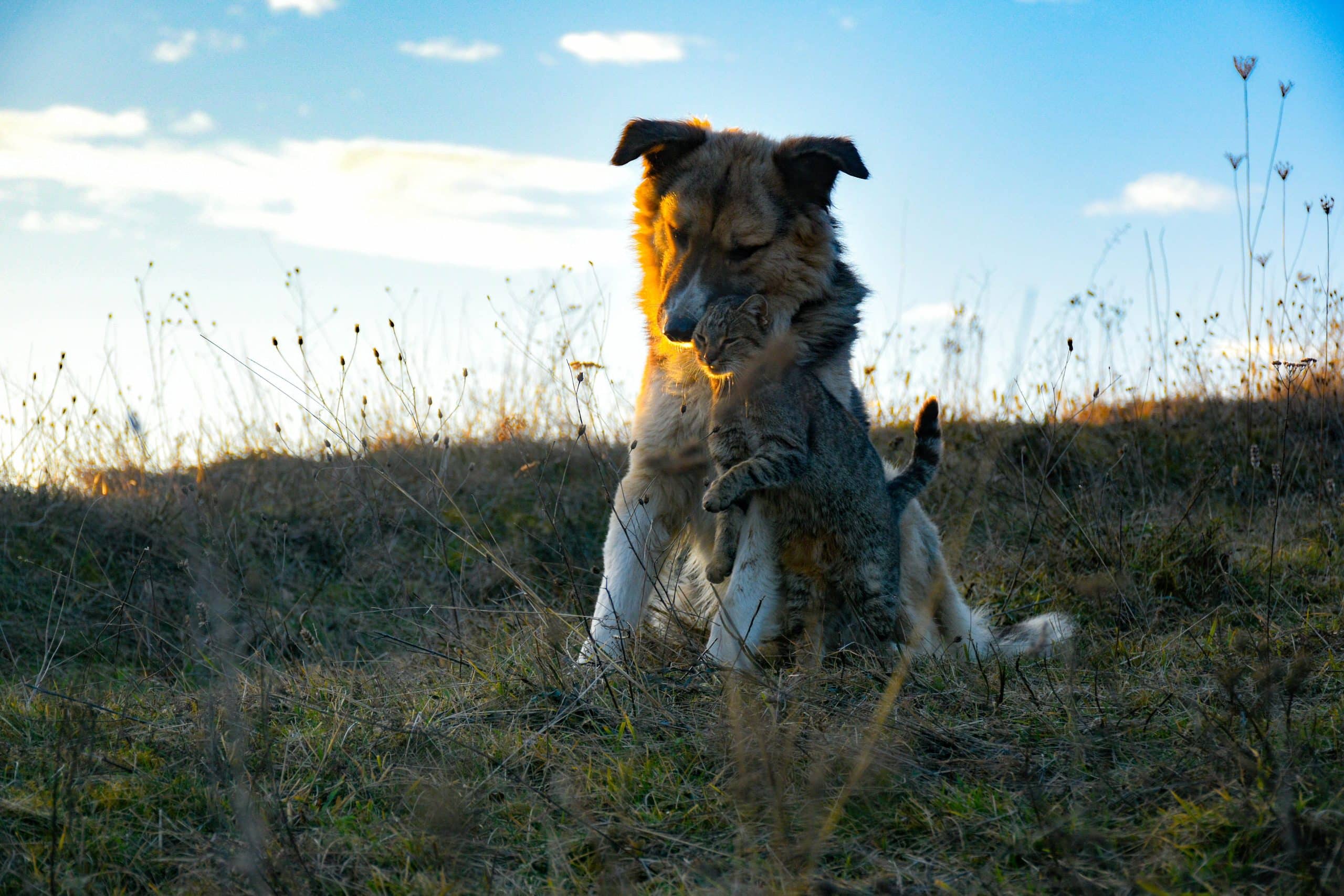Are you searching for the best food options for your furry friend? Look no further! In this article, you will find a wide variety of grain-free dog food options that are both nutritious and delicious. From premium brands to budget-friendly choices, there is something to suit every dog's taste and dietary needs. So, whether you have a picky eater or a dog with specific dietary restrictions, it's time to browse and buy the perfect grain-free dog food for your beloved companion.

This image is property of images.pexels.com.
Understanding Grain-Free Dog Food
Grain-free dog food has become increasingly popular among pet owners in recent years. As the name suggests, this type of dog food does not contain any grains like wheat, corn, or soy. But why exactly should you consider going grain-free for your furry friend? And how do you choose the best grain-free dog food? Let's dive into the world of grain-free dog food and explore its benefits, types, and factors to consider when selecting the right one for your pet.
Benefits of Grain-Free Dog Food
Improved Digestion
One of the key benefits of feeding your dog grain-free food is improved digestion. Dogs, like humans, have different sensitivities to certain foods, and grains can be difficult for them to digest. By eliminating grains from their diet, you can help alleviate digestive issues such as bloating, gas, and diarrhea. Grain-free dog food typically contains more easily digestible ingredients such as high-quality meats and vegetables, promoting a healthy digestive system.
Reduced Risk of Allergies
Grains are a common allergen for dogs. Many dogs can develop allergies or sensitivities to grains over time, leading to uncomfortable symptoms such as itchiness, excessive scratching, and hot spots. By opting for grain-free dog food, you can reduce the risk of allergic reactions and provide relief to your furry friend. It's important to note that grain-free does not equate to allergy-free, as dogs can develop allergies to other ingredients as well. If you suspect your dog has food allergies, it's best to consult with a veterinarian for guidance.
Increased Energy and Vitality
A well-balanced, grain-free diet can contribute to increased energy and vitality in your dog. When provided with wholesome ingredients, free from unnecessary fillers and additives, dogs can enjoy improved overall health. The high-quality protein and healthy fats found in grain-free dog food support muscle development, provide essential nutrients, and give your dog the energy they need to be happy and active.
Healthier Skin and Coat
Grain-free dog food can also have a positive impact on your dog's skin and coat health. Numerous grains, such as wheat and corn, are known to contribute to skin issues in dogs, including dryness, itchiness, and flakiness. By eliminating these potential allergens from their diet, you can help promote a healthy and lustrous coat, reduce shedding, and alleviate skin irritations. Additionally, many grain-free dog foods are formulated with added omega-3 fatty acids, which further support skin and coat health.
Controlled Weight and Appetite
For dogs struggling with weight management or those prone to overeating, grain-free dog food can be a great option. Since grain-free dog food often contains fewer carbohydrates and more protein, it can help regulate your dog's metabolism and prevent unnecessary weight gain. The higher protein content also keeps dogs feeling satisfied for longer periods, reducing the urge to overeat or beg for additional snacks. As a result, grain-free dog food can aid in maintaining a healthy weight and preventing obesity-related health issues.

This image is property of images.pexels.com.
Different Types of Grain-Free Dog Food
Grain-free dog food is available in various forms to suit your dog's preferences and nutritional needs. Here are the most common types of grain-free dog food:
Traditional Kibble
Traditional kibble is the most widely recognized form of dog food. It generally comes in dry pellet-like pieces that can be easily stored and served. Grain-free kibble is formulated to provide a balanced diet for dogs of all ages and sizes. This convenient option is often cost-effective and easily accessible at pet stores.
Canned Grain-Free Dog Food
Canned grain-free dog food offers a moist and flavorful alternative to dry kibble. This type of dog food provides higher moisture content and can be especially beneficial for dogs with dental issues or those who prefer softer textures. Additionally, canned grain-free dog food often has a higher protein content, making it an excellent choice for dogs with specific dietary needs or preferences.
Raw or Freeze-Dried Grain-Free Dog Food
Raw or freeze-dried grain-free dog food is a popular choice for pet owners interested in providing a more natural and ancestral diet for their dogs. Raw options typically consist of raw meats, bones, fruits, and vegetables that are minimally processed to retain their nutritional value. Freeze-dried options involve freeze-drying raw ingredients, preserving their nutrients while eliminating moisture. Both options offer a nutrient-dense diet and can be rehydrated with water before serving.
Dehydrated Grain-Free Dog Food
Dehydrated grain-free dog food is another nutritious option for pet owners. Dehydration involves gently removing the moisture from fresh ingredients, resulting in a lightweight and shelf-stable product. This type of dog food can be rehydrated with water or bone broth to create a complete and balanced meal. Dehydrated grain-free dog food is often packed with high-quality ingredients and can be a suitable choice for dogs with specific dietary restrictions or sensitivities.
Selecting the Best Grain-Free Dog Food
With so many grain-free dog food options available, how do you choose the right one for your pup? Here are some factors to consider when selecting the best grain-free dog food:
Consider Your Dog's Breed and Size
Different dog breeds and sizes have varying nutritional requirements. Large breed dogs may require different nutrient ratios than small breed dogs. Additionally, certain breeds may have specific dietary sensitivities or health conditions that need to be addressed. Consider your dog's individual needs and consult with your veterinarian to ensure you choose a grain-free dog food that suits them best.
Determine Your Dog's Specific Dietary Needs
Some dogs may require special diets due to allergies, sensitivities, or medical conditions. If your dog has specific dietary needs, such as a need for weight management, joint support, or a specific protein source, make sure the grain-free dog food you choose addresses those needs. Look for specialized formulations or consult with a veterinarian for recommendations.
Check for Quality Ingredients and Sourcing
When choosing grain-free dog food, it's essential to read and understand the ingredient labels. Look for high-quality protein sources like chicken, beef, or fish, and ensure they are listed as the first ingredients. Avoid products that contain artificial additives, fillers, or by-products. Additionally, consider the sourcing of the ingredients used. Ideally, look for dog food made with locally sourced or ethically raised ingredients for optimal quality.
Review Customer Reviews and Feedback
Customer reviews and feedback can provide valuable insights into the quality and effectiveness of grain-free dog food brands. Take the time to read customer reviews and consider their experiences. Look for brands with positive feedback regarding digestion, coat condition, energy levels, and overall satisfaction. However, it's important to remember that every dog is unique, and what works for one may not work for another. Use customer reviews as a guide, but always keep your dog's specific needs in mind.

This image is property of images.pexels.com.
Transitioning Your Dog to Grain-Free Food
Once you've selected the best grain-free dog food for your furry friend, it's essential to transition them gradually for a smooth dietary change. Follow these steps to ensure a successful transition:
Gradual Transition is Key
Abruptly switching your dog's diet can cause digestive upset. To prevent this, introduce the new grain-free dog food gradually over a period of about 7-10 days. Start by mixing a small amount of the new food with their current food and slowly increase the proportion of the new food each day.
Mixing Old and New Food
During the transition, gradually increase the amount of the new grain-free dog food while decreasing the amount of their old food. This slow integration allows their system to adjust to the new ingredients and reduces the likelihood of digestive issues. Observe your dog's response to the new food throughout the process.
Monitor Your Dog's Response and Adjust
Throughout the transition, closely monitor your dog's response to the new grain-free dog food. Look for any signs of digestive upset, such as loose stools, vomiting, or excessive gas. If you notice any adverse reactions, slow down the transition process or consult with a veterinarian for guidance.
Seek Advice from a Veterinarian if Needed
If you encounter any difficulties during the transition process or have concerns about your dog's dietary changes, don't hesitate to seek advice from a veterinarian. They can provide valuable insights, evaluate your dog's specific needs, and guide you through the transition to a grain-free diet smoothly.
Avoiding Common Pitfalls in Grain-Free Dog Food
While grain-free dog food offers many benefits, it's important to be aware of potential pitfalls and make informed choices. Here are some common pitfalls to avoid when selecting and feeding grain-free dog food:
Beware of Fillers and Artificial Additives
Not all grain-free dog food is created equal. Some brands may replace grains with other fillers or use artificial additives to enhance taste or texture. Avoid dog food products that contain excessive fillers or ingredients that provide little nutritional value. Instead, look for brands that prioritize high-quality ingredients and avoid unnecessary additives.
Watch Out for Excessive Protein Content
While dogs require a certain amount of protein, excessively high protein content can be detrimental to their health, especially for dogs with certain medical conditions like kidney or liver issues. It's essential to strike a balance and choose a grain-free dog food with an appropriate protein content that aligns with your dog's specific needs. Consult with your veterinarian to determine the ideal protein range for your dog.
Consider the Cost Implications
Grain-free dog food can be more expensive compared to conventional dog food. Before committing to a grain-free diet, consider the financial implications and ensure it fits within your budget. Compare prices and value across different brands and sizes to find the most cost-effective option that still meets your dog's nutritional requirements.
Avoid Drastic Dietary Changes Without Proper Consultation
While grain-free dog food offers numerous benefits, it's crucial to approach dietary changes with caution. Drastically changing your dog's diet without proper consultation can lead to digestive issues, nutrient imbalances, or exacerbation of existing health conditions. If you're considering switching to grain-free or have concerns about your dog's diet, consult with a veterinarian to ensure you make a well-informed decision that suits your pet's individual needs.

Grain-Free Dog Food and Allergies
Food allergies can cause significant discomfort and health issues for dogs. Identifying and managing these allergies is crucial for their overall well-being. Here's how grain-free dog food can help with allergies:
Identifying and Managing Food Allergies
Food allergies in dogs can be challenging to diagnose. Common symptoms include itchiness, recurrent ear infections, gastrointestinal disturbances, and skin issues. If you suspect your dog has a food allergy, consult with a veterinarian who can help identify the allergen through elimination diets or allergy testing. Once the allergen is identified, it's important to eliminate it from your dog's diet to manage their allergies effectively.
Common Allergens in Dog Food
Grains, such as wheat, corn, and soy, are common allergens in dog food. However, it's important to note that dogs can develop allergies to other ingredients as well, such as certain proteins or even vegetables. By switching to a grain-free dog food, you can eliminate one of the most common allergens and potentially alleviate your dog's allergic reactions.
The Role of Grain in Allergy Development
The role of grains in allergy development is still a topic of debate among experts. While grains are a known allergen for some dogs, it's not the case for all. Each dog is unique, and allergies can develop to any ingredient, not just grains. Therefore, it's important to consider your dog's individual needs and consult with a veterinarian for guidance in managing their allergies effectively.
How Grain-Free Dog Food Can Help Alleviate Allergies
Switching to grain-free dog food can be a beneficial step in managing your dog's allergies. By eliminating grains from their diet, you can eliminate a common allergen source and potentially provide relief from allergic reactions. However, it's important to note that not all allergies are due to grains, and working closely with a veterinarian to identify and manage allergies is crucial for your dog's well-being.
Grain-Free Dog Food for Senior Dogs
As dogs age, their nutritional needs change. Senior dogs require a well-balanced diet that supports their aging bodies. Here's why grain-free dog food can be a suitable option for senior dogs:
Changing Nutritional Needs in Older Dogs
Senior dogs experience several physiological changes as they age. Their metabolism slows down, their immune system weakens, and they may develop joint issues or other age-related health conditions. It's crucial to provide them with a diet that addresses these specific needs and supports their overall health and well-being.
Joint Health Support
Senior dogs are more prone to joint issues such as arthritis or mobility problems. Grain-free dog food often contains ingredients that promote joint health, such as glucosamine and chondroitin. These ingredients can help reduce inflammation and provide the necessary support for healthy joints and improved mobility.
Digestive Health Considerations
As dogs age, their digestive system becomes more sensitive. Grain-free dog food is often easier to digest than grain-based alternatives, making it a suitable choice for senior dogs with digestive issues or sensitivities. The higher-quality ingredients in grain-free dog food can help alleviate digestive discomfort and promote better nutrient absorption.
Choosing Appropriate Grain-Free Options for Senior Dogs
When selecting grain-free dog food for senior dogs, consider their specific needs and limitations. Look for formulas that are specifically formulated for senior dogs or those with age-related health concerns. These formulas often contain additional ingredients that support joint health, digestive health, and overall vitality. Consult with your veterinarian for specific recommendations based on your dog's age, breed, and any pre-existing health conditions.

Grain-Free Dog Food on a Budget
Feeding your dog a grain-free diet doesn't mean breaking the bank. Although grain-free dog food can be more expensive, there are ways to make it more budget-friendly. Consider the following tips:
Comparing Prices and Value
Compare prices and value across different brands and sizes to find the most cost-effective option. Sometimes, larger bags or bulk purchases offer better value per pound. However, make sure to evaluate the nutritional value and quality of the ingredients rather than solely focusing on the price.
Using Discounts and Promotions
Keep an eye out for discounts, promotions, or loyalty programs offered by pet stores or online retailers. Many brands offer occasional sales or discounts that can help reduce the cost of grain-free dog food. Subscribing to newsletters or following brands on social media can help you stay updated on any special offers.
Buying in Bulk
Consider buying grain-free dog food in bulk to save money in the long run. Many retailers offer bulk options, such as larger bags or multi-packs, which can be more cost-effective compared to single purchases. Ensure that the bulk purchase doesn't compromise the quality or freshness of the dog food.
DIY Options for Grain-Free Dog Food
If you have the time and resources, making your own grain-free dog food can be a cost-effective alternative. This option allows you to have better control over the ingredients and their quality. However, it's crucial to consult with a veterinarian or a veterinary nutritionist to ensure your homemade dog food meets all of your dog's nutritional needs.
Common Concerns and Misconceptions about Grain-Free Dog Food
Despite its popularity, there are common concerns and misconceptions surrounding grain-free dog food. Let's address some of these concerns:
The Link Between Grain-Free Diets and Heart Disease
Recent studies have raised concerns about a potential link between grain-free diets and a specific heart condition called dilated cardiomyopathy (DCM). However, it's important to note that the exact cause of DCM is still under investigation, and the link to grain-free diets is not yet fully understood. It's essential to consult with a veterinarian for the most up-to-date information and guidance on feeding grain-free dog food.
Balancing Nutrient Requirements
Feeding a balanced diet is crucial for a dog's overall health. While grain-free dog food can be a healthy choice, it's essential to ensure it meets all of your dog's nutrient requirements. Look for grain-free dog food that is formulated to meet the Association of American Feed Control Officials (AAFCO) standards and consult with a veterinarian to ensure your dog's specific needs are met.
Feeding Grain-Free to Dogs with No Health Issues
Grain-free dog food can be fed to dogs without any specific health issues as long as it meets their nutritional needs. Some pet owners prefer grain-free dog food as a preventive measure or to support overall health. However, it's important to note that not all dogs require a grain-free diet, and consulting with a veterinarian can help determine the most appropriate dietary choice for your pet.
Myths Surrounding Grain-Free Dog Food
There are several myths surrounding grain-free dog food, such as it being a fad diet or lacking essential nutrients. Grain-free dog food can be a healthy and nutritious option for many dogs, especially those with grain allergies or sensitivities. It's important to base your decision on reliable information, consult with a veterinarian, and consider your dog's individual needs when choosing their diet.
In conclusion, understanding grain-free dog food is crucial for making informed choices regarding your dog's diet. Grain-free dog food offers various benefits such as improved digestion, reduced risk of allergies, increased energy and vitality, healthier skin and coat, and controlled weight and appetite. There are different types of grain-free dog food available, including traditional kibble, canned options, raw or freeze-dried choices, and dehydrated varieties. When selecting grain-free dog food, consider your dog's breed and size, specific dietary needs, ingredient quality and sourcing, and customer reviews. Transitioning your dog to grain-free food should be done gradually, and any concerns or issues should be addressed with a veterinarian. Additionally, be mindful of common pitfalls in grain-free dog food, understand the relationship between grain-free diets and allergies, consider grain-free options for senior dogs, and explore budget-friendly ways to feed grain-free. Finally, be aware of common concerns and misconceptions surrounding grain-free dog food and make well-informed decisions that prioritize your dog's health and well-being.


